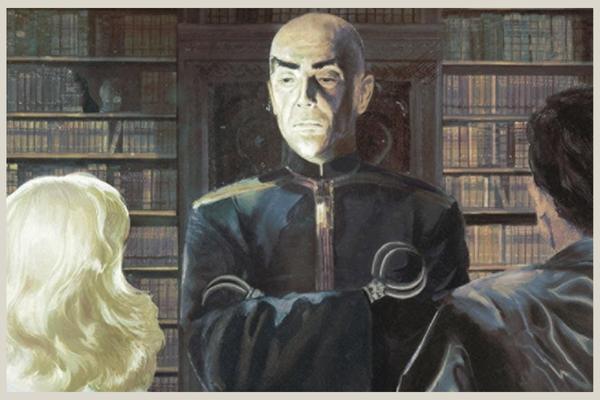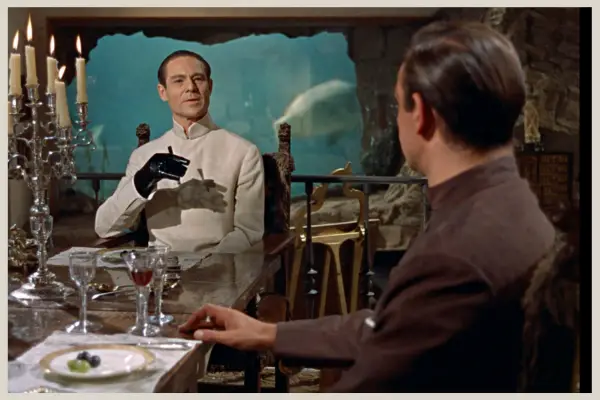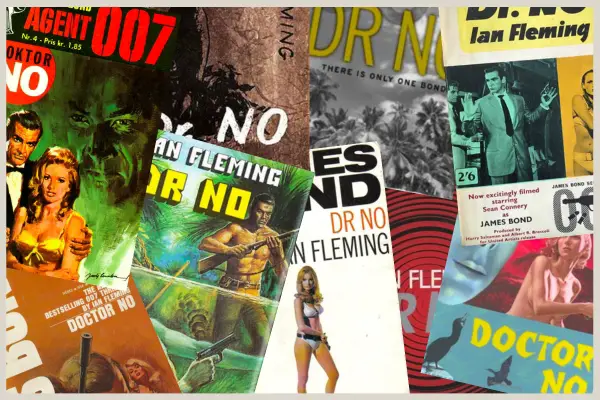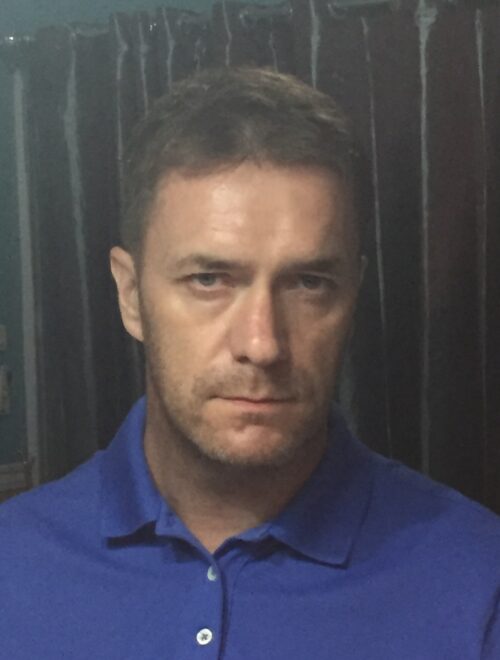Dr. No Novel
Dr. No novel stands as a hallmark in the chronicles of the James Bond series, written by original Bond author Ian Fleming. Serving as the sixth novel of the James Bond series, this suspenseful thriller was penned by Fleming at his Goldeneye estate in Jamaica. The book first saw publication on 31 March 1958, released by Jonathan Cape in the United Kingdom.
The narrative delves into a mission entrusted to Bond, the British Secret Service agent, to investigate the mysterious disappearance of two MI6 operatives in Jamaica. His quest leads him to Doctor Julius No, a character of Chinese descent operating a guano mine on the Caribbean island called Crab Key, and eventually introduces him to Honeychile Rider.
Interestingly, the inception of Dr. No (novel) traces back to Fleming’s original screenplay for the planned television show, Commander Jamaica. However, as those plans fell through, Fleming cleverly adapted his ideas, breathing life into The Wound Man, which eventually evolved into the novel, Dr. No. The antagonist of the story draws inspiration from the notorious Fu Manchu tales by Sax Rohmer.
After release, the novel had a mixed reception. In Britain, it faced a tide of negative criticism, with some branding it as a blend of “Sex, Snobbery and Sadism.” Yet, when the book made its debut in the American market, it was greeted with a warmer response.
The popularity of Dr. No eventually led to its serialization in the Daily Express and its adaptation as the first Bond movie in 1962, marking the start of the renowned Bond movie series with Sean Connery as the leading man.
>> Find the book on Amazon <<
Dr. No (Novel) – Plot and Summary
The sixth Fleming novel, Dr. No opens with MI6 agent James Bond recovering from a severe poisoning, inflicted by the SMERSH agent Rosa Klebb in the previous novel – From Russia, with Love.
Frustrated and worrying about him, Bond’s superior, M, assigns him a seemingly straightforward mission in the British colony of Jamaica. His task is to unravel the mystery behind the disappearance of Commander John Strangways, the head of MI6’s Station J in Kingston, and his secretary.
Strangways had been investigating the activities of Doctor Julius No, a mysterious Chinese-German who lives on the fictional island of Crab Key and operates a guano mine.
In Jamaica, Bond quickly senses that he’s under surveillance. His hotel room is ransacked, a basket of poisoned fruit is delivered, and a deadly centipede is planted in his bed while he’s sleeping.

Bond, aided by an old friend, Quarrel, discreetly visits Crab Key to verify any connection between No and the vanished MI6 agents. There, they encounter Honeychile Rider, who is on the island to collect precious shells.
The trio is soon captured by Doctor No’s henchmen, following Quarrel’s tragic demise at the hands of No’s “dragon” — a flamethrowing, armored swamp buggy designed to deter intruders. Dr. No’s base of operations is revealed to be an opulent facility carved into the mountain.
Dr No reveals his alliance with the Soviets and his elaborate underground setup to sabotage US test missile launches from Cape Canaveral. His past unravels, revealing him as a former member of a Chinese tong, from whom he stole a considerable sum of money.
In retaliation for his theft, Dr. No was brutally disciplined through the severance of his hands and a gunshot to his body. However, a rare medical condition — dextrocardia, where his heart was located on the right side of his body — played a fortuitous role in his survival from the gunshot wound.
Dr. No, fascinated by the human body’s resilience and survival capabilities in the face of pain, forces Bond to traverse an obstacle course filled with electric shocks, burns, venomous spiders, and a confrontation with a captive giant squid, which Bond overcomes using improvised weapons.
Rider, left to be devoured by crabs, manages to escape when the crustaceans ignore her. Bond eventually kills Doctor No by commandeering the guano-loading machine and burying him alive in guano.
Bond and Rider escape from Dr. No’s complex in the “dragon” buggy, sail back to Jamaica, and inform the colonial authorities of their ordeal.
>> Find the book on Amazon <<
Examination of Main Characters and Their Roles in the Plot
James Bond: MI6 agent 007, James Bond, serves as the protagonist of Dr. No novel. As a skilled and resourceful spy, he’s sent to Jamaica to investigate the mysterious disappearance of two MI6 operatives.
Throughout the novel, Bond’s wit, endurance, and combat skills are put to the test. His character stands as a symbol of resilience, with his triumphant survival through a series of physical and psychological challenges, showcasing his capability to overcome adversity.
Doctor Julius No: Dr. No is the eponymous antagonist of the story. He is a reclusive Chinese-German operating a guano mine on Crab Key. Despite his physical handicap, having lost his hands due to past misdeeds, Dr. No is a formidable adversary, showing an astute mind, a sinister fascination with human endurance, and an ambition to cause geopolitical chaos. His alliance with the Soviets and his plans to sabotage U.S. missile tests reveal his character as a significant threat to global peace.
Honeychile Rider: Rider is the female lead who crosses paths with Bond on Crab Key. Collecting valuable shells, she finds herself ensnared in Dr. No’s web of intrigue. Despite her vulnerability, Rider’s character displays considerable courage and resourcefulness. She survives a horrifying ordeal and manages to escape from Dr. No’s complex alongside Bond.
Quarrel: An old friend of Bond’s, Quarrel, plays a significant role in aiding Bond in his mission. He assists Bond in navigating the Jamaican terrain and investigating Crab Key. Unfortunately, Quarrel meets a tragic end at the hands of Dr. No’s “dragon”, showcasing the lethal nature of the threat that Bond and Rider face. His death adds an element of personal revenge to Bond’s mission.
M: As Bond’s superior, M sets the story’s plot in motion by sending Bond to investigate the disappearance of the MI6 agents in Jamaica. Though not physically present in the majority of the narrative, M plays a crucial role in shaping Bond’s mission.

Analysis of Main Events
Bond’s Arrival and Surveillance in Jamaica: Bond’s arrival in Jamaica and the ensuing signs of surveillance play an essential role in setting the stage for the suspense and danger that will unfold. The instances of the ransacked hotel room, the poisoned fruit, and the deadly centipede all serve to create an atmosphere of imminent threat, indicating that Bond’s mission is far from simple.
Investigation of Crab Key and Quarrel’s Death: Bond and Quarrel’s expedition to Crab Key signifies the story’s shift from investigation to action. The island, with its guano mine and rumored ‘dragon,’ becomes a tangible symbol of danger. Quarrel’s tragic death by the ‘dragon’ raises the stakes and introduces the harsh reality of Dr. No’s lethal deterrents.
Meeting Honeychile Rider and Capture by Dr. No: The introduction of Honeychile Rider adds a layer of complexity to the story, intertwining her fate with Bond’s mission. The subsequent capture by Dr. No’s men moves the story into the heart of the antagonist’s lair, providing the setting for the story’s climax.
Revelation of Dr. No’s Plans and Torture of Bond: In a classic villainous revelation, Dr. Julius No unveils his plans to Bond. This moment illuminates the larger geopolitical context of Bond’s mission, raising the plot from a local investigation to an international conflict. The subsequent torture of Bond underscores Dr. No’s sadism and propels Bond into an extraordinary test of endurance.
Bond’s Escape, Dr. No’s Death, and Return to Jamaica: Bond’s escape from the ventilation system, his encounter with the giant squid, and his rescue of Rider provide a satisfying conclusion to the protagonist’s trials. The turning of the tables, with Bond using Dr. No’s guano machine to kill him, serves as a fitting end for the antagonist. The final escape from Crab Key and return to Jamaica signify the end of the ordeal and the successful completion of Bond’s mission.
>> Find the book on Amazon <<
Themes, Motifs and Symbols of Dr. No (Novel)
- Endurance and Survival: A dominant theme in Dr. No novel is the human capacity for endurance and survival in the face of physical and psychological hardships. Bond’s encounters with deadly centipedes, electric shocks, burns, venomous spiders, and a giant squid all test the limits of his physical and mental fortitude. Similarly, Rider’s survival against the planned crab attack also echoes this theme.
- Good vs. Evil: The classic dichotomy of good versus evil permeates the narrative. Bond, the embodiment of righteousness and bravery, stands against the malevolent and cunning Dr. No. This theme is reinforced by the final confrontation between Bond and Dr. No, culminating in the victory of good over evil.
- Espionage and Geopolitics: The theme of espionage is central to the narrative, underscoring the high-stakes world of international politics and intrigue. The revelation of Dr. No’s alliance with the Russians and his plans to sabotage American missile tests situates the plot within the larger context of Cold War tensions.
- The ‘Dragon’: The ‘dragon’ serves as a potent symbol in Dr. No, embodying fear and danger. The supposed myth turns out to be a flamethrowing, armored vehicle used by Dr. Julius No to deter intruders, symbolizing the deception and threat inherent in his operations.
- The Guano Mine: The guano mine on Crab Key symbolizes Dr. No’s sphere of power and influence. This location houses the heart of his operations, from his guano trade to his plot to sabotage U.S. missiles. The mine’s substance, guano, doubles as a symbol of Dr. No’s deceptive practices, as beneath the innocuous surface of a guano mine, he carries out nefarious activities.
Dr. No Novel – Sixth Novel that Propelled Bond to the Silver Screen
Dr. No, the sixth novel in Ian Fleming’s James Bond book series is set in the exotic setting of Jamaica and the secretive island of Crab Key. The narrative weaves a rich tapestry of suspense, action, and intrigue, and James Bond stands as a symbol of resilience, ingenuity, and fortitude, while Dr. No personifies cunning, malice, and an ambition that threatens global peace.
Despite initial criticism in Britain, Dr. No was warmly received in the United States and has since been recognized for its pivotal role in establishing the James Bond series’ enduring popularity. The novel’s themes of endurance, the clash of good vs. evil, and the complex world of international espionage resonate deeply within the genre of spy fiction.
As a piece of literature, Dr. No underscores the relevance and fascination of the spy genre, offering a gripping exploration of geopolitical tensions within a framework of compelling character dynamics and breathtaking action sequences.
Its legacy, amplified by its adaptation into the first James Bond movie, remains influential in shaping the landscape of spy fiction and the cultural image of the charismatic, daring, and resourceful secret agent.





